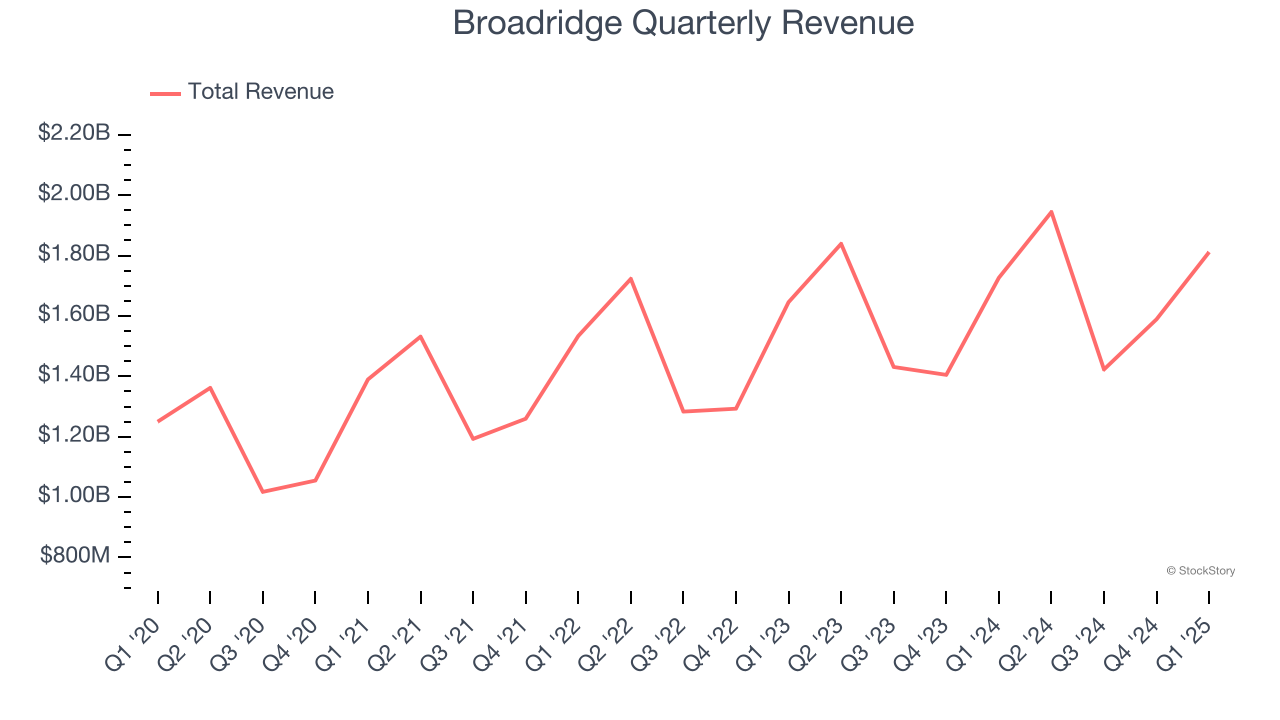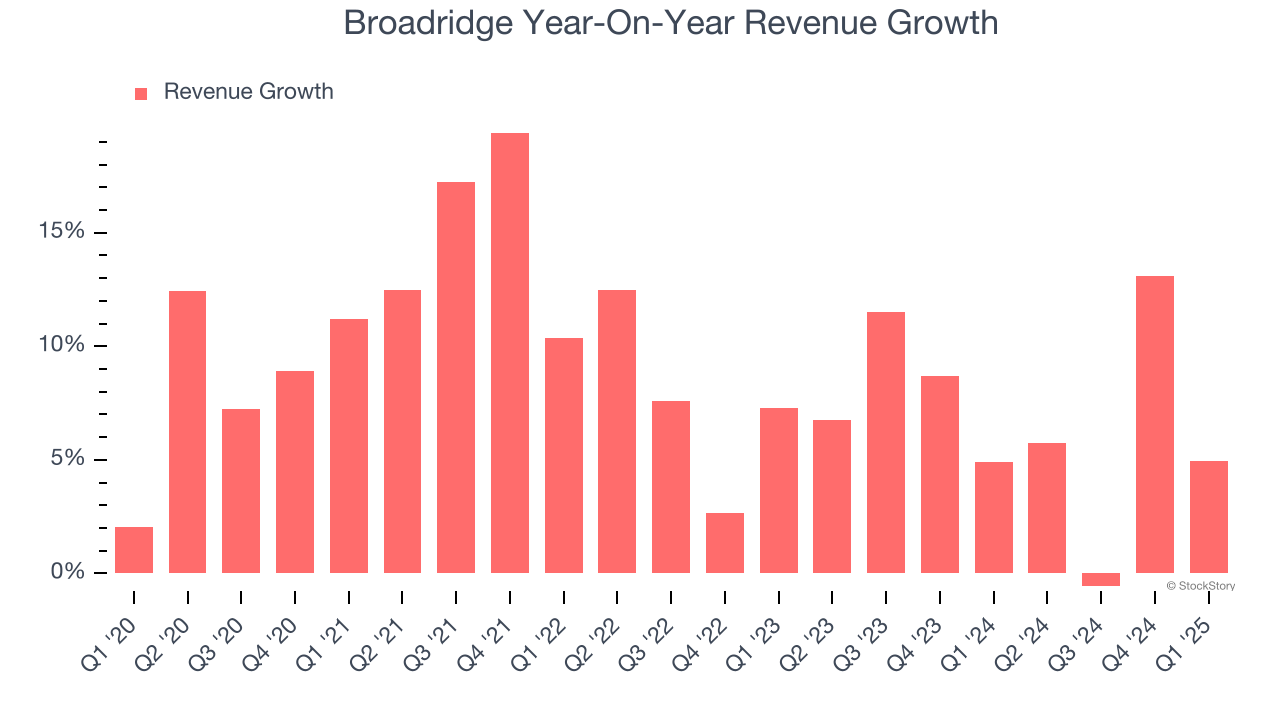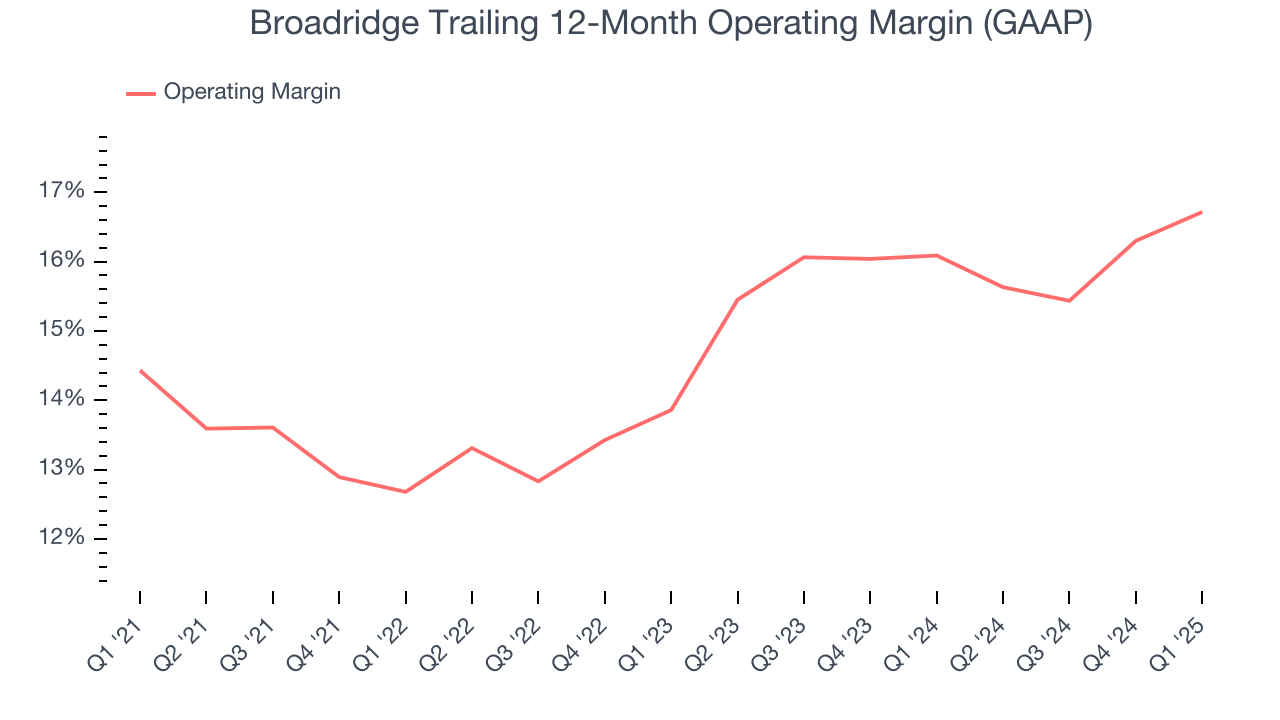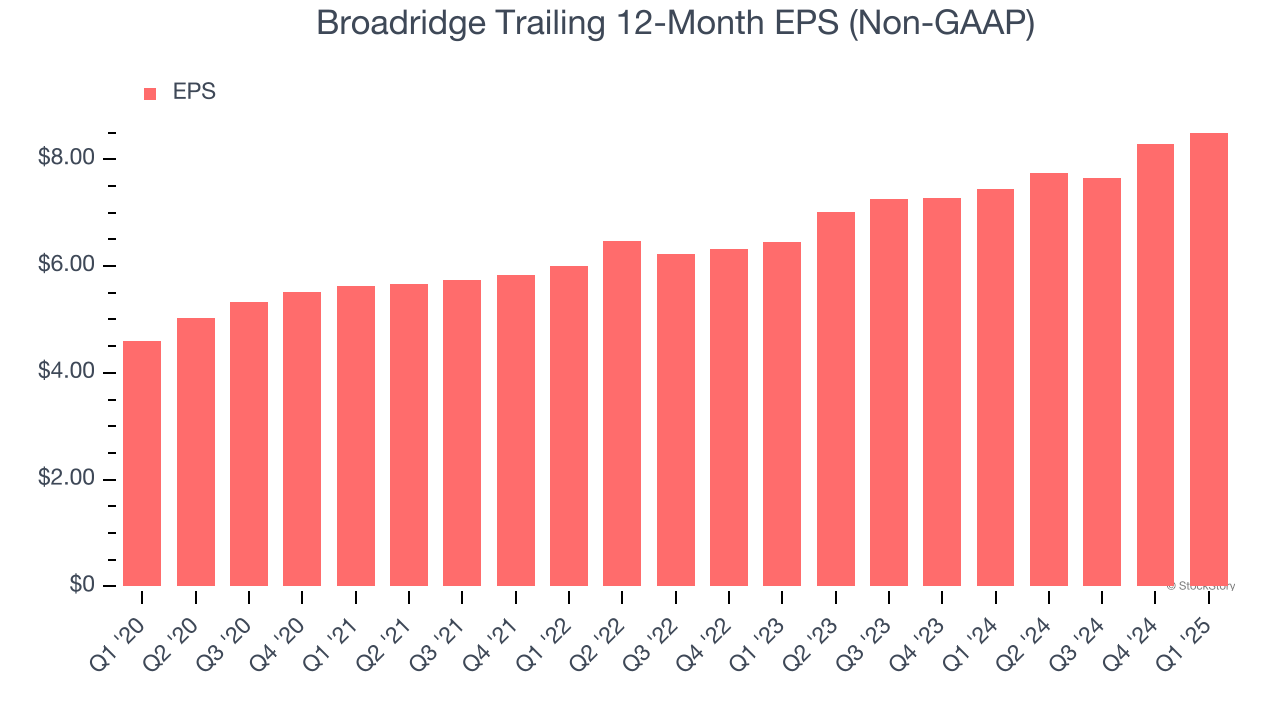
Financial technology provider Broadridge (NYSE:BR) fell short of the market’s revenue expectations in Q1 CY2025 as sales rose 4.9% year on year to $1.81 billion. Its non-GAAP profit of $2.44 per share was 1.2% above analysts’ consensus estimates.
Is now the time to buy Broadridge? Find out by accessing our full research report, it’s free.
Broadridge (BR) Q1 CY2025 Highlights:
- Revenue: $1.81 billion vs analyst estimates of $1.86 billion (4.9% year-on-year growth, 2.5% miss)
- Adjusted EPS: $2.44 vs analyst estimates of $2.41 (1.2% beat)
- Adjusted EBITDA: $377.4 million vs analyst estimates of $444.5 million (20.8% margin, 15.1% miss)
- Operating Margin: 19%, up from 17.5% in the same quarter last year
- Free Cash Flow Margin: 18.6%, up from 9.7% in the same quarter last year
- Market Capitalization: $28.37 billion
"Broadridge delivered strong third quarter results, including 8% Recurring revenue growth constant currency and 9% Adjusted EPS growth," said Tim Gokey, Broadridge CEO.
Company Overview
Processing over $10 trillion in equity and fixed income trades daily and managing proxy voting for over 800 million equity positions, Broadridge Financial Solutions (NYSE:BR) provides technology-driven solutions that power investing, governance, and communications for banks, broker-dealers, asset managers, and public companies.
Sales Growth
A company’s long-term performance is an indicator of its overall quality. Any business can have short-term success, but a top-tier one grows for years.
With $6.77 billion in revenue over the past 12 months, Broadridge is one of the larger companies in the business services industry and benefits from a well-known brand that influences purchasing decisions.
As you can see below, Broadridge grew its sales at an impressive 9.1% compounded annual growth rate over the last five years. This is an encouraging starting point for our analysis because it shows Broadridge’s demand was higher than many business services companies.

We at StockStory place the most emphasis on long-term growth, but within business services, a half-decade historical view may miss recent innovations or disruptive industry trends. Broadridge’s annualized revenue growth of 6.7% over the last two years is below its five-year trend, but we still think the results were respectable. 
This quarter, Broadridge’s revenue grew by 4.9% year on year to $1.81 billion, falling short of Wall Street’s estimates.
Looking ahead, sell-side analysts expect revenue to grow 6.2% over the next 12 months, similar to its two-year rate. This projection is above the sector average and suggests its newer products and services will help support its recent top-line performance.
Here at StockStory, we certainly understand the potential of thematic investing. Diverse winners from Microsoft (MSFT) to Alphabet (GOOG), Coca-Cola (KO) to Monster Beverage (MNST) could all have been identified as promising growth stories with a megatrend driving the growth. So, in that spirit, we’ve identified a relatively under-the-radar profitable growth stock benefiting from the rise of AI, available to you FREE via this link.
Operating Margin
Broadridge has been an efficient company over the last five years. It was one of the more profitable businesses in the business services sector, boasting an average operating margin of 14.9%.
Looking at the trend in its profitability, Broadridge’s operating margin rose by 2.3 percentage points over the last five years, as its sales growth gave it operating leverage.

This quarter, Broadridge generated an operating profit margin of 19%, up 1.5 percentage points year on year. This increase was a welcome development and shows it was more efficient.
Earnings Per Share
We track the long-term change in earnings per share (EPS) for the same reason as long-term revenue growth. Compared to revenue, however, EPS highlights whether a company’s growth is profitable.
Broadridge’s EPS grew at a spectacular 13% compounded annual growth rate over the last five years, higher than its 9.1% annualized revenue growth. This tells us the company became more profitable on a per-share basis as it expanded.

We can take a deeper look into Broadridge’s earnings to better understand the drivers of its performance. As we mentioned earlier, Broadridge’s operating margin expanded by 2.3 percentage points over the last five years. This was the most relevant factor (aside from the revenue impact) behind its higher earnings; taxes and interest expenses can also affect EPS but don’t tell us as much about a company’s fundamentals.
In Q1, Broadridge reported EPS at $2.44, up from $2.23 in the same quarter last year. This print beat analysts’ estimates by 1.2%. Over the next 12 months, Wall Street expects Broadridge’s full-year EPS of $8.50 to grow 4.5%.
Key Takeaways from Broadridge’s Q1 Results
Revenue missed but EPS managed to beat. Overall, this was a mixed quarter that is unlikely to get the market excited. The stock traded down 1.6% to $238.15 immediately following the results.
Broadridge may have had a tough quarter, but does that actually create an opportunity to invest right now? What happened in the latest quarter matters, but not as much as longer-term business quality and valuation, when deciding whether to invest in this stock. We cover that in our actionable full research report which you can read here, it’s free.
